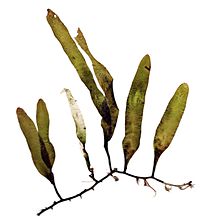
Biomarker-based evaluation of cytogenotoxic potential of glyphosate in Vigna mungo (L.) Hepper genotypes
Sign Up to like & getrecommendations! Published in 2021 at "Environmental Monitoring and Assessment"
DOI: 10.1007/s10661-021-08865-x
Abstract: Herbicides have proven to be a boon for agricultural fields. Their inherent property to kill weeds and unwanted vegetation makes them an essential biological tool for farmers and agricultural systems. Besides being capable of destroying… read more here.
Keywords: vigna mungo; glyphosate vigna; glyphosate; biomarker based ... See more keywords

SNP genotyping and diversity analysis based on genic-SNPs through high resolution melting (HRM) analysis in blackgram [Vigna mungo (L.) Hepper]
Sign Up to like & getrecommendations! Published in 2020 at "Genetic Resources and Crop Evolution"
DOI: 10.1007/s10722-020-01064-6
Abstract: Genetic relatedness among 27 blackgram [Vigna mungo (L.) Hepper] genotypes was analysed using 19 genic-single nucleotide polymorphisms (SNPs) through high resolution melting (HRM) analysis. The scrutiny of normalized HRM curves grouped most of the genotypes… read more here.
Keywords: vigna mungo; analysis; blackgram vigna; genic snps ... See more keywords

Biogenic ZnO and Cu nanoparticles to improve seed germination quality in blackgram (Vigna mungo)
Sign Up to like & getrecommendations! Published in 2019 at "Materials Letters"
DOI: 10.1016/j.matlet.2018.10.038
Abstract: Abstract Biogenic ZnO and Cu nanoparticles for accessing its impact in improving germination and seedling vigor in black gram (Vigna mungo) is reported herein. Invigoration studies have been conducted under in vitro conditions where seeds… read more here.
Keywords: biogenic zno; zno nanoparticles; vigna mungo; germination ... See more keywords

Draft genome sequence of the pulse crop blackgram [Vigna mungo (L.) Hepper] reveals potential R-genes
Sign Up to like & getrecommendations! Published in 2021 at "Scientific Reports"
DOI: 10.1038/s41598-021-90683-9
Abstract: Blackgram [Vigna mungo (L.) Hepper] (2n = 2x = 22), an important Asiatic legume crop, is a major source of dietary protein for the predominantly vegetarian population. Here we construct a draft genome sequence of blackgram, for the first… read more here.
Keywords: blackgram; genome sequence; blackgram vigna; vigna mungo ... See more keywords

Identification of Stable and High Yielding Dual Season Genotypes in Blackgram [Vigna mungo (L.) Hepper]
Sign Up to like & getrecommendations! Published in 2021 at "Legume Research"
DOI: 10.18805/lr-4523
Abstract: Background: The production of pulses recorded a negative growth rate due to stagnation in expansion of pulse growing area and very slow progress in the improvement of productivity of important pulses. Therefore, there is urgent… read more here.
Keywords: dual season; vigna mungo; high yielding; yielding dual ... See more keywords

Genome-wide Association Study for Yield and Yield-Related Traits in Diverse Blackgram Panel (Vigna mungo L. Hepper) Reveals Novel Putative Alleles for Future Breeding Programs
Sign Up to like & getrecommendations! Published in 2022 at "Frontiers in Genetics"
DOI: 10.3389/fgene.2022.849016
Abstract: Blackgram (Vigna mungo L. Hepper) is an important tropical and sub-tropical short-duration legume that is rich in dietary protein and micronutrients. Producing high-yielding blackgram varieties is hampered by insufficient genetic variability, absence of suitable ideotypes,… read more here.
Keywords: mungo hepper; related traits; yield related; panel ... See more keywords

Biomining Sesuvium portulacastrum for halotolerant PGPR and endophytes for promotion of salt tolerance in Vigna mungo L.
Sign Up to like & getrecommendations! Published in 2023 at "Frontiers in Microbiology"
DOI: 10.3389/fmicb.2023.1085787
Abstract: Halophytic plants can tolerate a high level of salinity through several morphological and physiological adaptations along with the presence of salt tolerant rhizo-microbiome. These microbes release phytohormones which aid in alleviating salinity stress and improve… read more here.
Keywords: salt tolerance; halotolerant pgpr; vigna mungo; salt ... See more keywords